Just a few months ago yours truly was invited to compete in the Summer Solstice 24 Hour up here in ON. Fun times for sure, provided you’re physically prepared and have all the necessary equipment. One thing to remember in events like these is even if you think you don’t need something, you do. I am going to break this article up into two parts, each with several sections containing checklists of items you’ll want to bring for a great race.
PART I
Bike preparation
What to have on the bike
Riding clothes and accessories
What should be in that hydration pack
PART II
Base camp
Foods
Personal preparation
The first thing to keep in mind in an event like a 24 hour race is, unlike a regular ride, you will have to contend with anything mother nature tosses at you. Fortunately, if your bike has been prepared properly it shouldn’t be that bad. If the weather reports say it’s going to rain, you’ll be riding in mud – lots of mud to be exact. Once again it’s not like going out for a regular ride – those trails will very quickly be turned into slop.
You can eliminate a few worries by having your drive train bomb-proofed. How do you do that? For one thing, lubricate your components before the event using a lube that is slightly thickerthan you would normally use. I tend to use a waxy oil – it clings a bit better and doesn’t wash out as quickly.
I also like to switch out my hollow pin chain for a more durable chain (such as the PC-971 from SRAM). I really like SRAM chains because of the Powerlink which provides a means to remove the chain on the trail without any tools. The Powerlink also makes removing the chain quick and easy so you can soak it in lubricant between laps.
To keep your drive train operating smoothly, it’s also a good idea to protect your cables from grime. I use the Gore Ride-on cable system which is sealed from shifter pod to the derailleur, keeping all the grime and water out of the cable itself. The last thing you want during a 24 hour race is a shifting jam so bad that you stop using your shifter altogether.
Choosing the right tires for race day course conditions can give you a big leg up on the competition. If it’s a dry day, a faster rolling tire is a good choice while a tire with a bit more tread is better for soft dirt. If you’re planning on riding in the rain you’ll need a mud tire. If you have a course with tons of fast switchbacks and turns, a tire with good transition knobs would be wise. On the topic of tires, if you have a spare wheel set it’s smart to set it up with a different type of tire so you can react to changing conditions.
To truly bomb-proof your bike, have it tuned up just before the race. You can follow one of my previous posts on servicing your bike to give you a good idea about what to check. For those who don’t have time to dig through the archives, start at the front of the bike checking wheel bearing smoothness/ looseness, brake operation, and the amount of brake pad life remaining (you may want to just put a new set of pads). On the topic of pads, if it’s going to rain, toss a set of sintered pads on your bike – organic pads will not last at all. Torque the handlebars and brake levers. Lube the shifter pods and torque all the bolts down on the front end (stem bolts, brake bolts, and rotor bolts) . If you have a FS bike, check the operation of all the bearings and pivots. Reset the pressure on your rear shock, checking for leaks using soapy water all around. Also check the front derailleur, cable clamp, and derailleur clamp bolts for proper torque. Test your rear brake action, torque, and pad life (replace as necessary). Check rear wheel bearings and cassette. Finally, examine the rear derailleur condition and movement.
In a 24 hour race you are going to ride at night so you need a good quality lighting system or two. I use the Princeton Tec Switchback 3 along with a few other systems as back up. You may want to consider having two systems with you – one on the bike and the other on the helmet. Make sure your systems are functioning and fully charged for the event. Bring a spare battery if you can or at least plan a way to charge your battery when you’re not riding (car charger or a generator).
Bike Prep Checklist:
- Get a tune up including nut and bolt check and new brake pads and chain
- Bring an extra set of tires or wheels for different weather conditions
- Pack spare parts (cables, derailleur hanger, nuts and bolts, chain, tubes, chainring and bolts)
- Get a spare lighting system and batteries tested and ready to go
- Consider a tail light as well (some races require one)
Once your bike is prepped there are a few things you need to have on that bike during your race. The most important thing that should be on the bike is your timing chip (dongle or lap counting device). If that’s not on your bike, your laps won’t be registered! Also, don’t forget your number plate. Make sure the plate does not impede your cables or your steering. Bring a spare tube and an water bottle if you need it. Just remember that there will be mud flung onto everything!
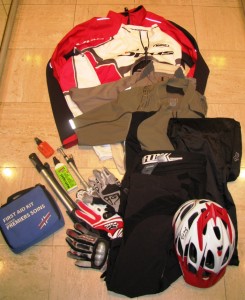 Choosing the right clothing for a 24 hour race can be a daunting task. To be successful on the course, you need to stay as dry as possible. That means you need a few changes of clothing. Have at least 3 sets of shorts and jerseys – trust me, you’ll go through all of them. Bring clothing that will work with you during the evening portions of the race. Remember in some states and provinces there will be a big difference in temperatures in the evenings compared to the day time. Bring at least one windproof jacket and a pair of pants to keep warm during those hours.
Choosing the right clothing for a 24 hour race can be a daunting task. To be successful on the course, you need to stay as dry as possible. That means you need a few changes of clothing. Have at least 3 sets of shorts and jerseys – trust me, you’ll go through all of them. Bring clothing that will work with you during the evening portions of the race. Remember in some states and provinces there will be a big difference in temperatures in the evenings compared to the day time. Bring at least one windproof jacket and a pair of pants to keep warm during those hours.
Clothing checklist:
- Helmet (and optional back-up)
- 5 or 6 sets of socks
- 4 jerseys
- 4 shorts
- 2 sets of gloves
- 1 rain jacket and pants (wind proof and water repellent – consider Gore wind stopper products or Paclite)
- Casual wear and warm clothing for when you’re off the bike
- A 2L hydration pack which can also hold snacks for your lap (nothing too large – a simple pack like the Camelbak Octane XC will work)
What should be in that Hydration Pack
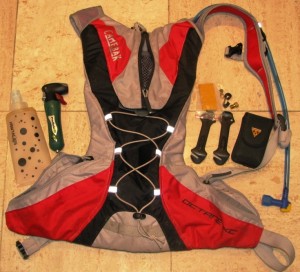 For those who choose to use a hydration pack during the race, try get one that will just hold the essentials. Remember you’re only going out for about 12 miles (17km) at a time. All you need for a lap is your water, nutrition and emergency items for fixing a flat tire (forget these and you’re running the rest of the way). For tire problems you’ll need a tube, inflator, and tire irons. You may also want to pack a simple multitool just in case something comes loose or needs tweaking due to mud buildup.
For those who choose to use a hydration pack during the race, try get one that will just hold the essentials. Remember you’re only going out for about 12 miles (17km) at a time. All you need for a lap is your water, nutrition and emergency items for fixing a flat tire (forget these and you’re running the rest of the way). For tire problems you’ll need a tube, inflator, and tire irons. You may also want to pack a simple multitool just in case something comes loose or needs tweaking due to mud buildup.
For on-trail nutrition, carry items that are easy to eat and digest – experiment with this one before your event. Get your electrolites and carbs from a gel like Hammer Gel or a sports drink in your hydration pack. You can also carry fruit like bananas (consume these items first) or nutrition bars. Just remember with any food item, especially nutrition bars, consume with plenty of water. For best performance, try to eat before you’re hungry and drink before you’re thirsty (just a tip).
In your Hydration pack (if you use one):
- Hydration pack with enough water for one lap
- Food items for one lap
- Inflator, tube, and tire irons
- A multitool
- Spare chain links
Tomorrow I’ll be posting Part II of this article, including tips on how to set up your base camp, food to bring, and the tools you’ll want to have for more serious race repairs.



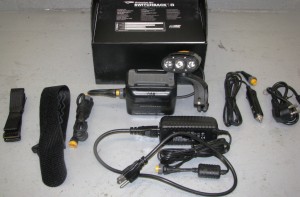


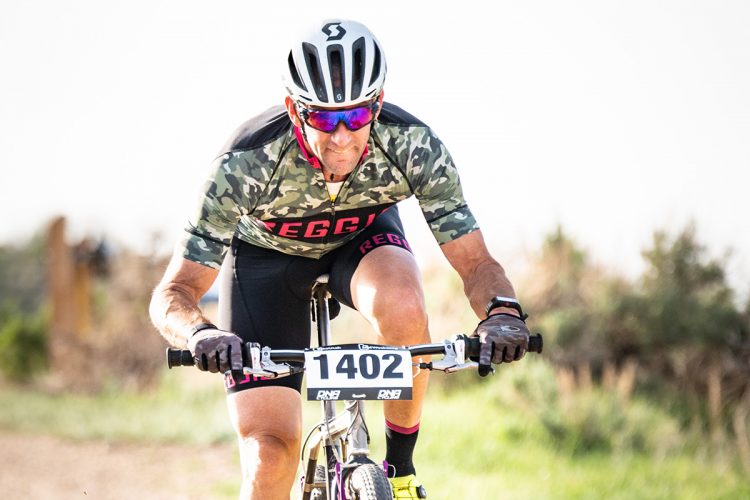



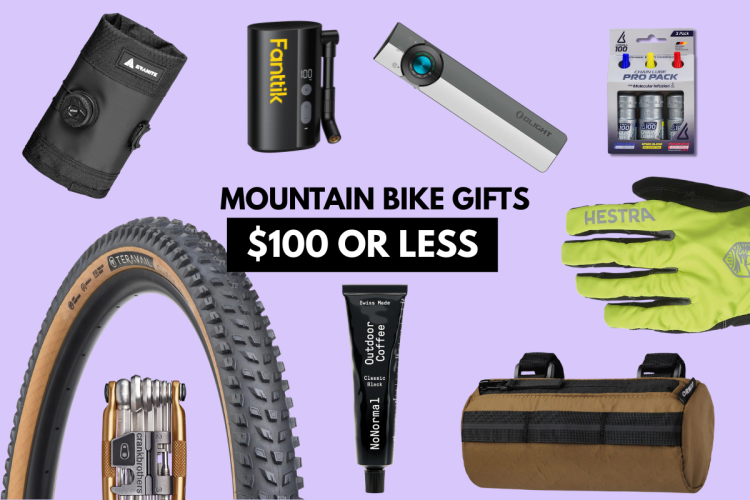
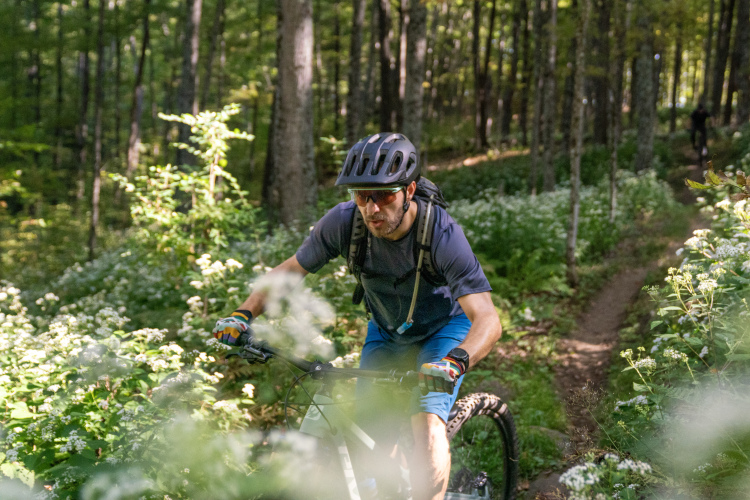

6 Comments
Sep 2, 2009
Aug 31, 2009
Sep 1, 2009
Like your write up here Element22, very thorough and very good advise.
We had a 12 hour class also in our race that a lot of riders did solo, I was even more impressed when I seen the number of riders that rode the entire 24 solo. Amazing.
One nice thing about a 24 hour race in Alaska in the summer; We don’t need no stinking lights! LOL
If anyone is interested there are photos from the race on my website, ‘24 Hours of Matanuska’ (link on my profile).
Aug 31, 2009
Aug 31, 2009
Mountain biking articles, guides and info, updated daily at the Mountain Biking guide blog
Sep 1, 2009